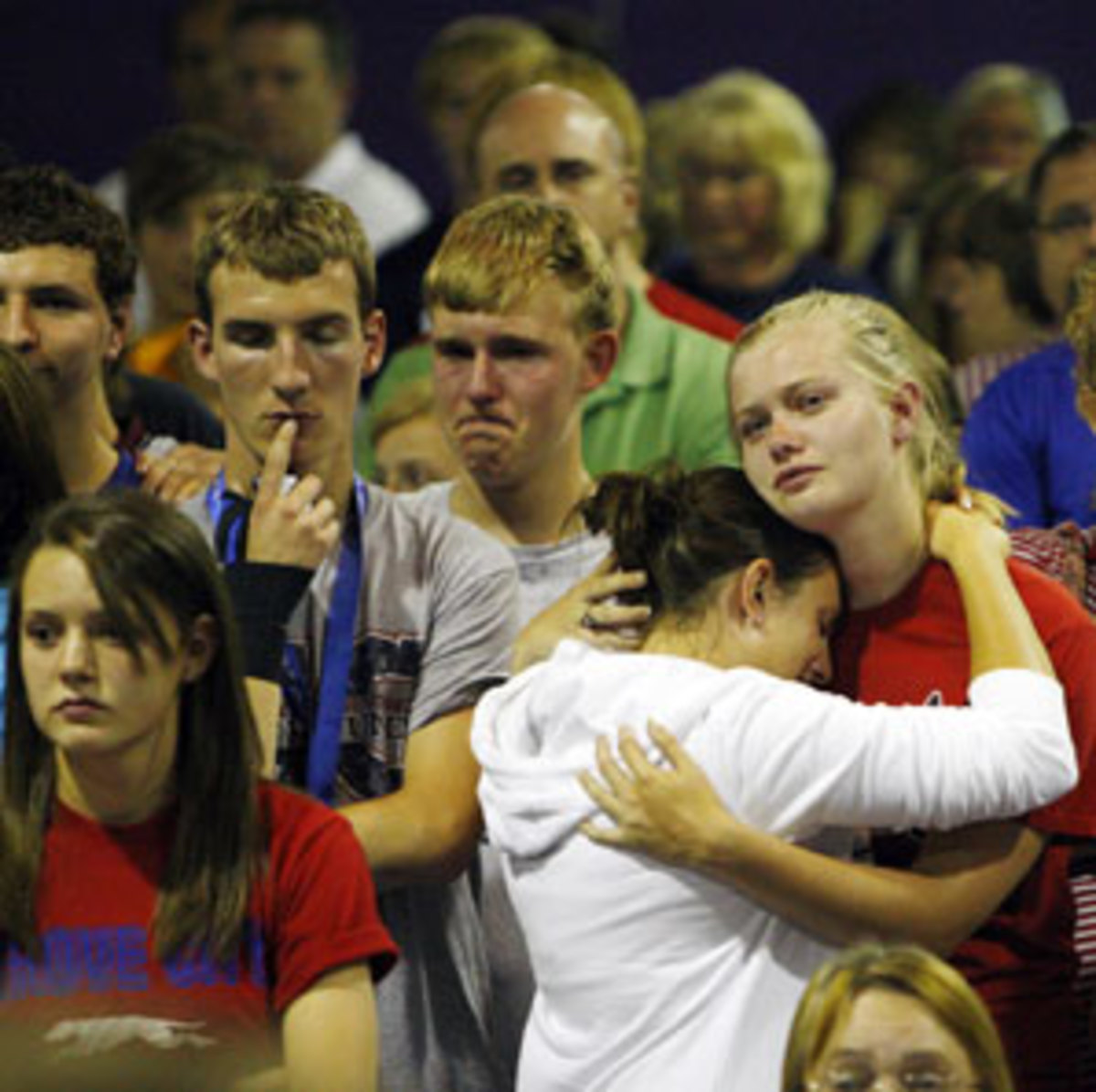Athletics face crucial tax levy vote in Ohio district on Election Day
Mike Mayers said the South-Western City School District's decision to cancel sports made every day feel "like Tuesday." This particular Tuesday, however, looms larger than any Friday night when the lights shone bright and Mayers played quarterback in front of 11,000 fans at Grove City (Ohio) High. Though some of their teammates left for other schools, Mayers and hundreds of other district athletes who stayed have traded uniforms for campaign shirts and footballs for flyers in a last-ditch effort to save high school sports.
District voters head to the polls Tuesday to decide whether teams at South-Western's four high schools will play again this season. They'll vote on Issue 47, a tax levy district leaders say is necessary to fund extras such as sports, music programs, art programs and busing for high schoolers as well as more basic education programs. If the levy -- which will cost homeowners an extra $227 a year per $100,000 of assessed value -- doesn't pass, the football team at Franklin Heights High may never play another game, the soccer teams at Central Crossing High may never play another match and the nationally renowned band at Grove City High may never play another note.
Opponents of the levy claim the school district could fund these programs without additional taxes if teachers and administrators would make certain concessions. The anti-levy side argues that the district can't ask for higher taxes every time it needs money, especially not when so many residents are strapped because of the down economy. So far, the anti-levy forces have won. The levy has failed on three previous occasions, and only one operating levy has passed in the district in the past 15 years.
You'll find no endorsement of either position here, because after spending three days in September in the South-Western district, I came to understand both sides of the debate. The pro-levy voters have a point; the future of the community may very well hang in the balance. Some wonder that if the district is so poor that it must cut athletics and other extracurricular activities, it might have to cut advanced placement and honors classes next. That, they argue, would chase the best and brightest from the community. The anti-levy voters also have a point. They've grown sick of rising taxes, and they believe the high school athletes have been used as leverage in the fight for more tax dollars.
No matter which side you support, pay attention to this election, because your town may hold a similar one soon. Across the country, cash-strapped school districts have had to decide whether they can fund athletics and other extracurriculars with public dollars. Some districts have moved to pay-to-participate models, as South-Western will if the levy passes, but the fee-based systems exclude lower-income children who might need sports even more than their better-off neighbors.
So far, no school district has completely eliminated athletics. In Mount Vernon, N.Y., teachers, coaches, parents and students raised almost $1 million to fund athletics after it was slashed from the 2008-09 school year budget. Athletics were restored to the budget for this school year. In Alameda, Calif., in 2008, students walked out of class and marched on the district office to protest the district's decision to cut sports and AP classes. The programs were restored after a tax levy passed.
In the other cases, sports survived because athletes wouldn't let them die. Athletes overcome obstacles and practice problem-solving every day, and that makes them uniquely suited to handle adversity. If there is a group capable of making the best of a bad situation, it's a bunch of athletes. The athletes who chose to stay in South-Western are trying, but what will they do if the levy fails? Considering the results of the past three votes, it's a legitimate question.
Win or lose Tuesday, sports in South-Western won't be the same. A win will bring back athletics, but parents may have to shell out as much as $500 a family for their children to participate in sports and clubs. A loss would kill sports for at least the remainder of the school year, and it could cause a mass exodus of athletes from the district. If that happens, the athletes who remain probably would keep trying to play, because sports almost always find a way to survive.
It's just that this time, they might have to find a new way.






